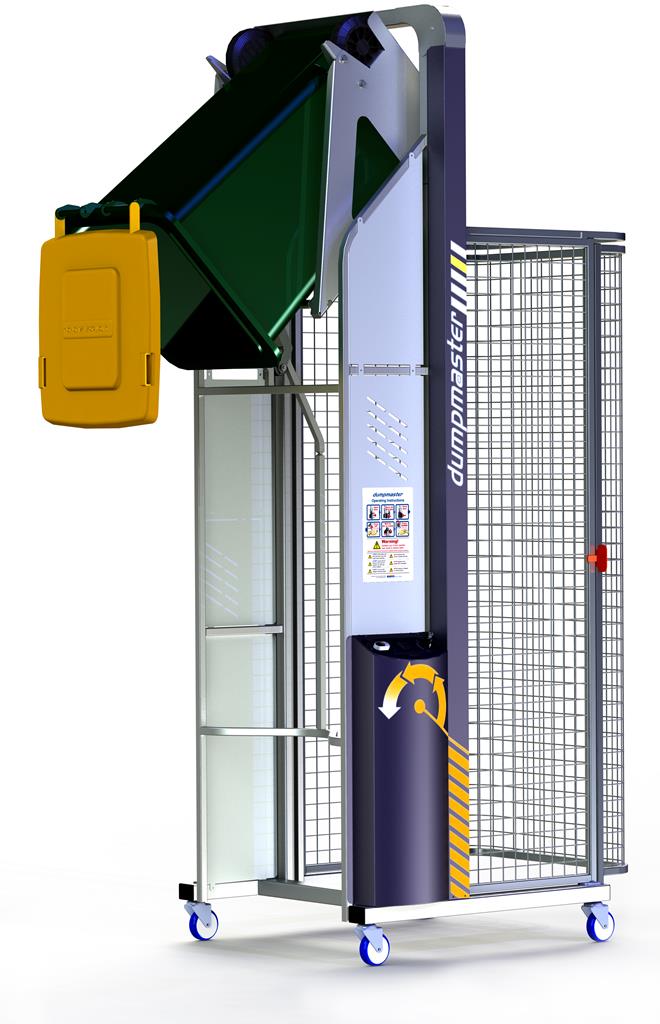We use cookies to make your experience better. To comply with the new e-Privacy directive, we need to ask for your consent to set the cookies. Learn more.
Responding to Heat Hazards in the Workplace: The Role of Material Handling Equipment

In 2021, the Occupational Health and Safety Administration (OSHA) published a proposed rule for heat injury and prevention in both outdoor and indoor workplaces.
The rule shows the administration’s renewed focus on heat. In 2021, there were 36 work-related deaths due to environmental heat exposure. That’s the lowest number since 2017 — but while fatalities are falling, heat-related injuries still make up 91.9% of all exertional injuries in OSHA’s Severe Injury Report database.
Where practical, OSHA recommends using engineering controls to prevent heat-related illnesses. That includes general ventilation, air conditioning, and insulation of hot surfaces — but it also includes the use of material handling equipment (MHE) to reduce manual work.
Appropriate MHE limits the workload, providing another layer of protection for the worker. It’s also an excellent way to enforce ergonomics, which may improve compliance with the General Duty Clause of the OSH Act — and greatly improve productivity.
Limiting Heat-Related Illnesses with Material Handling Equipment
By performing an assessment for heat hazards and control measures, you can find opportunities to improve your workflow.
According to OSHA, risk factors for heat stress risk include:
- Environmental Conditions - Including humidity, air temperature, air speed, presence of heat sources (such as furnaces), and sunlight.
- Level of Physical Activity - Tasks that require a heavy physical workload.
- Clothing and Gear - Including personal protective equipment (PPE) required by the task.
- Individual Risk Factors - Including the worker’s age, weight, medical history, level of heat acclimation, and other personal factors.
Your assessment should begin with identification of environmental conditions. Determine which factors can be changed through engineering controls (such as installing fans or air conditioners) and which cannot.
While individual risk factors may be difficult to address, OSHA recommends strategies to acclimate workers to the heat. By gradually increasing work over the first 1-2 weeks for new and temporary workers, employers can dramatically reduce risks.
Identifying Tasks with Elevated Risks of Heat Stress
After addressing general environmental conditions and employee risk factors, you can focus on workloads. Ask questions:
- Which tasks require repetitive movements or heavy lifting?
- Which tasks require unnatural postures or body movements?
- Which tasks could risk bodily contact with hard or sharp edges?
- Can existing material handling equipment be utilized or modified for the task?
Heavy lifting constitutes a serious risk to workers by increasing the chances of heat stress and musculoskeletal injuries. The NIOSH lifting equation can help you identify tasks that qualify as “heavy lifting" — and determine whether material handling equipment is essential for OSHA compliance, rather than simply helpful.
To learn more about the NIOSH lifting equation, read: What Is the NIOSH Lifting Equation and How Can It Help?
Examples of How Equipment Can Address Heat Hazards in the Workplace
By assessing the tasks that make up your workflow, you can find MHE that improves throughput while reducing heat hazards for workers. Some quick examples: 
- Lift tables and pallet positioners can be used to keep loads at an ergonomic height and reduce bending, reaching, and lifting.
Mobile tilt tables can be moved throughout your facility, tilting loads to meet the worker. - Bin dumpers can be used for waste management or integrated with production lines to dump raw materials into hoppers. BHS carries a versatile selection of bin dumpers for virtually every lift-and-dump task.
- Vertical Reciprocating Conveyors (VRCs) can move materials between floors and integrate with other material handling systems.
Of course, you should continue to follow OSHA’s other recommendations for heat stress prevention. Train employees to recognize the warning signs of heat stress, enforce regular breaks, and monitor temperatures and humidity regularly.
But the right MHE can make an enormous difference, particularly at operations where other environmental controls are less feasible.
When workers expend less effort on lifting and positioning — which can be handled much more effectively by mechanical equipment — they can work in hot environments for longer periods of time without taking as many risks.
If you’re ready to explore options for ergonomic material handling equipment, we’re here to help. Call the BHS sales team at 1.800.BHS.9500.


